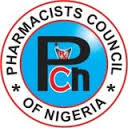In the evolving landscape of medical education and healthcare practices, the provision of basic necessities for professionals in clinical practice environments is becoming increasingly essential. Among these needs is the "Ward Coat Allowance" a dedicated stipend provided to medical professionals for the purchase and maintenance of their ward coats, which are mandatory attire during clinical postings. The implementation of this allowance represents not only a practical intervention but also a strategic investment in healthcare intervention.
From a practical standpoint, the ward coat is a critical part of the professional identity and functional equipment of a medical professional. It ensures proper hygiene, distinguishes clinical professionals from other trainees or staff, and is a visible commitment to professionalism and patient care. The consistent use of clean and standardized ward coats is integral to infection prevention and control (IPC), which is especially crucial in an era still grappling with the aftermath of pandemics and ongoing concerns about hospital-acquired infections.
However, the cost of acquiring and maintaining these coats can be a financial burden for professionals—many of whom already struggle with limited resources. The introduction of a Ward Coat Allowance directly eases this burden, enabling students to meet required dress standards without compromising their financial stability. In this way, the allowance fosters equity by ensuring that no student is disadvantaged due to economic constraints.
Beyond practicality, the payment of this allowance carries significant symbolic and morale-boosting value. It signals institutional recognition of the challenges faced by students during clinical training. This gesture of support can enhance student motivation, commitment, and sense of belonging. It sends a message that the system values not just the outcome of medical education but the well-being of its participants.
The benefits also extend to the institutions themselves. Properly dressed and equipped students contribute to the professional image of teaching hospitals and universities. They reinforce standards in clinical settings and encourage a culture of responsibility and pride. Additionally, when students are adequately supported, they are more likely to exhibit confidence, which enhances the quality of patient interactions and care delivery during training.
In terms of implementation, the Ward Coat Allowance is a manageable, low-cost initiative with high impact. It can be administered through existing student welfare channels, with minimal bureaucratic expansion. The cost per student is relatively small compared to the institutional investments in infrastructure, yet the return—both tangible and intangible—is significant.
In conclusion, the provision of a Ward Coat Allowance is not merely an act of financial support, but a multifaceted policy with broad implications. It addresses practical needs, promotes equity, strengthens infection control practices, and boosts morale among future healthcare professionals. As such, it is a commendable initiative that deserves broad adoption across all medical training institutions.
See below recent request for payment of Ward Coat Allowance





